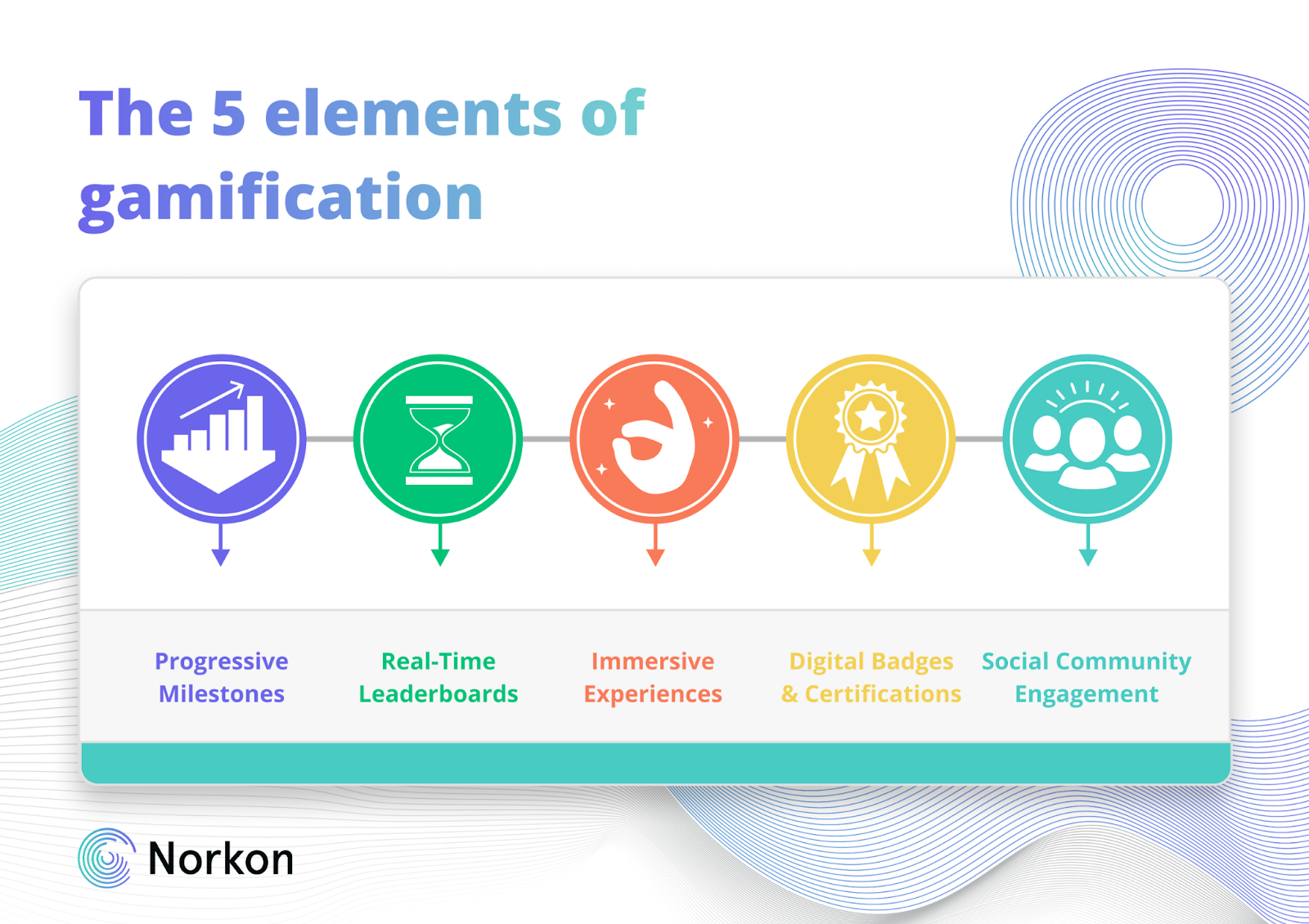Gamification
What is Gamification?
Definition:
Gamification involves the application of game elements, such as competition, rewards, and interactive features, to non-game contexts to engage and motivate users. It is a strategic approach that leverages the psychological aspects of gaming to enhance user experience, promote participation, and achieve specific objectives in areas beyond traditional gaming. Gamification is employed in various fields, including education, marketing, employee training, and customer engagement, to make activities more enjoyable and encourage desired behaviors.
Analogy:
Consider gamification as turning everyday tasks into a game. Just as games provide challenges, rewards, and a sense of accomplishment, gamification transforms non-game activities by incorporating elements that stimulate engagement and motivation.
Further Description:
Gamification implementation involves several key components:
Objective Identification: Clearly define the goals and objectives that gamification aims to achieve, whether it’s increasing user engagement, promoting learning, or enhancing productivity.
Game Elements Integration: Select and integrate game elements such as points, badges, leaderboards, challenges, and rewards into the non-game context to create an engaging experience.
User Experience Design: Design the user experience to be intuitive, enjoyable, and aligned with the target audience’s preferences, ensuring that gamified elements enhance rather than distract from the main purpose.
Feedback and Progress Tracking: Provide real-time feedback and mechanisms for users to track their progress, fostering a sense of accomplishment and encouraging continued participation.
Social Interaction: Incorporate social elements, such as multiplayer features or community forums, to enhance collaboration, competition, and a sense of community among users.
Customization and Personalization: Allow users to personalize their experience by providing choices, challenges, and rewards that align with their preferences, creating a more immersive and tailored gamification approach.
Why is Gamification Important?
Increased Engagement: Gamification captures users’ attention and encourages active participation by making activities more enjoyable and rewarding.
Behavioral Change: It can drive desired behaviors, whether it’s completing tasks, learning new skills, or adopting healthier habits, by leveraging intrinsic and extrinsic motivation.
Learning Enhancement: Gamification is used in education and training to make learning more interactive, memorable, and effective, promoting knowledge retention and skill development.
Motivation and Productivity: By incorporating elements like rewards and recognition, gamification motivates individuals to stay focused on tasks, leading to increased productivity.
Community Building: Social aspects of gamification foster a sense of community, encouraging users to interact, collaborate, and compete in a shared environment.
Examples and Usage:
Duolingo: The language-learning app Duolingo uses gamification to make the process of learning a new language fun and engaging. Users earn points for completing lessons, achieve streaks for daily practice, and compete with friends.
Nike Training Club: The Nike Training Club app incorporates gamification elements into fitness routines. Users earn badges, set personal challenges, and compete with others to enhance their workout experience.
LinkedIn: LinkedIn uses gamification in the form of profile completion progress bars, skill endorsements, and congratulatory messages, encouraging users to actively update their profiles and engage with the platform.
Key Takeaways:
- Clearly articulate the goals and objectives that gamification is intended to achieve.
- Select and integrate game elements that align with the context and objectives of gamification, such as points, badges, and rewards.
- Ensure that the gamified experience is enjoyable, user-friendly, and aligned with the preferences of the target audience.
- Offer real-time feedback and mechanisms for users to track their progress, enhancing the sense of accomplishment.
- Foster collaboration and community building by incorporating social elements into the gamification strategy.





